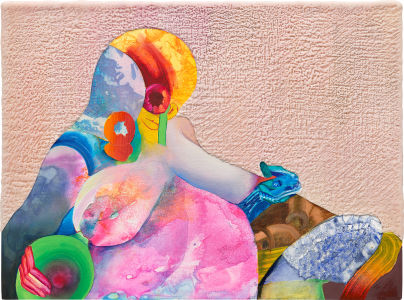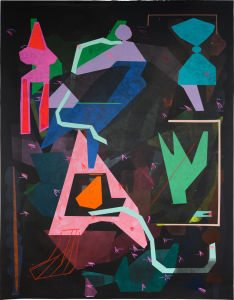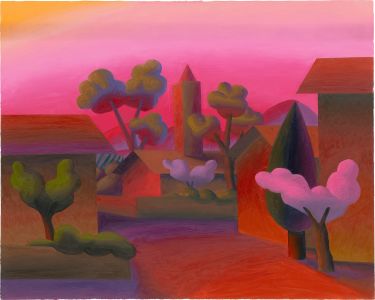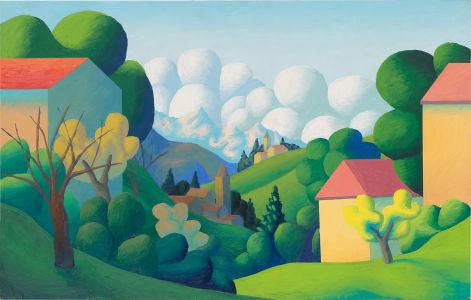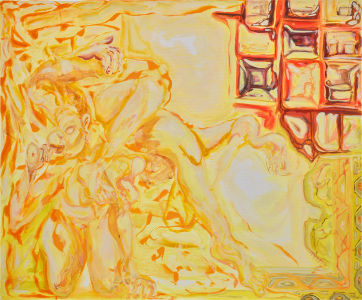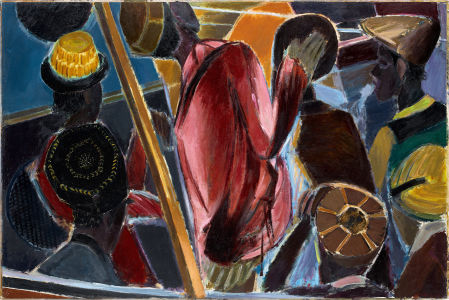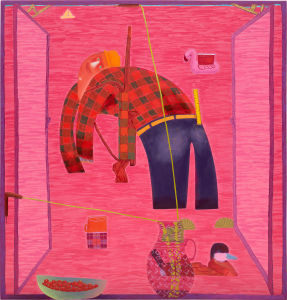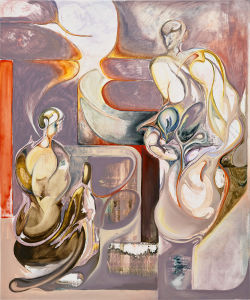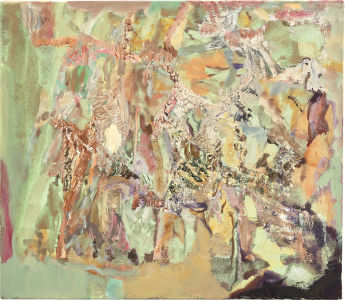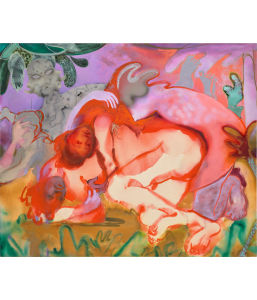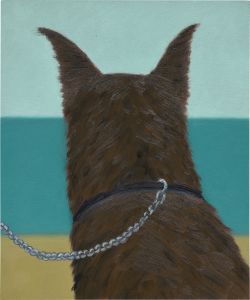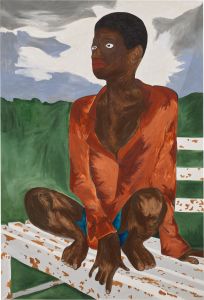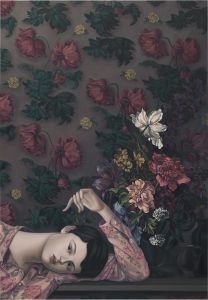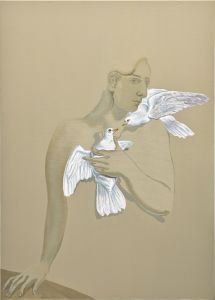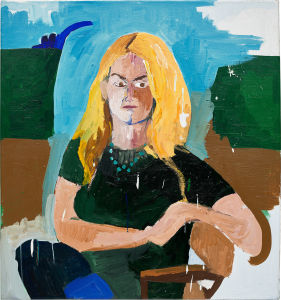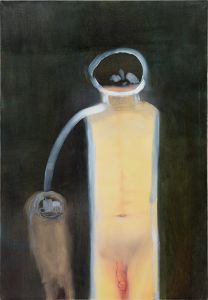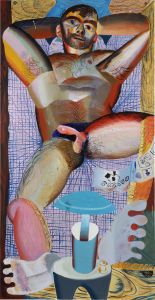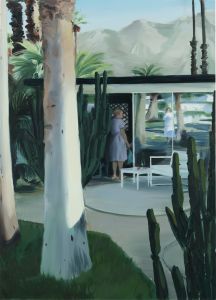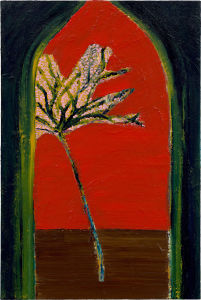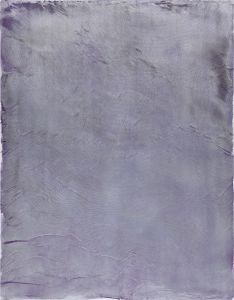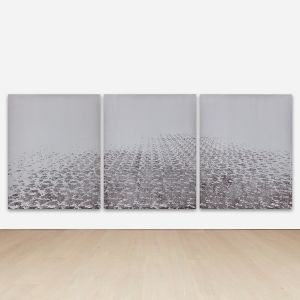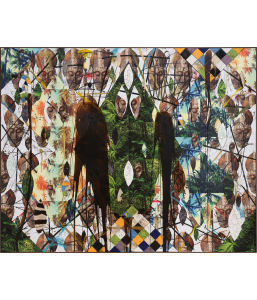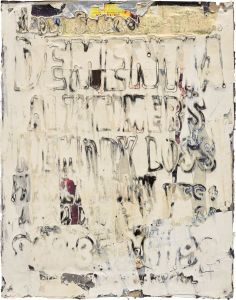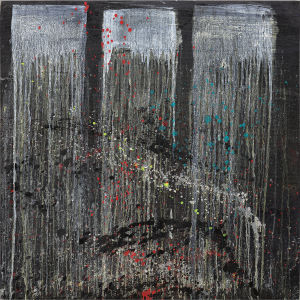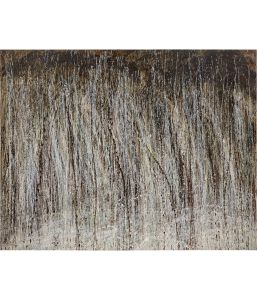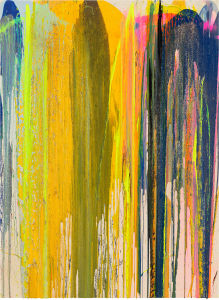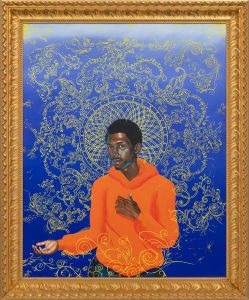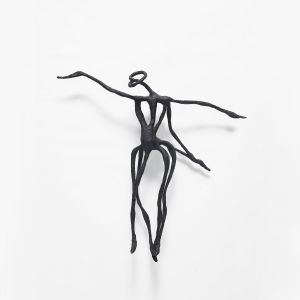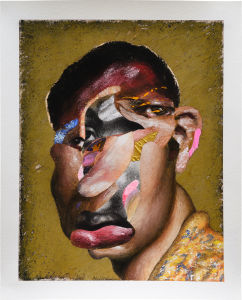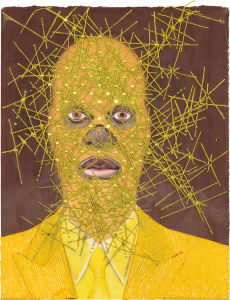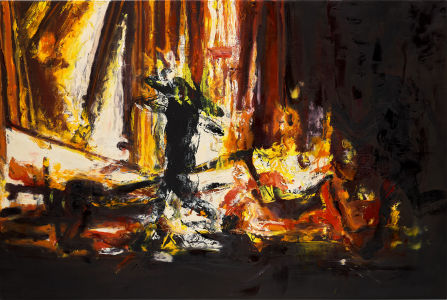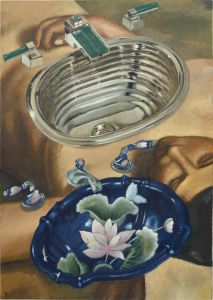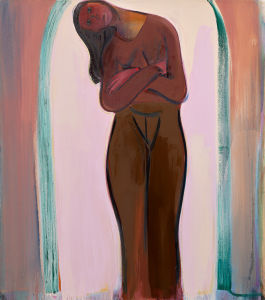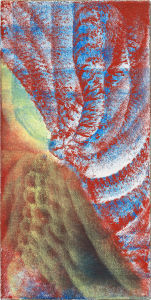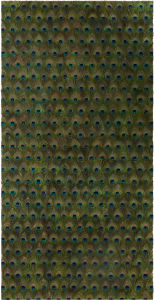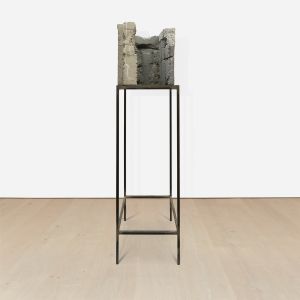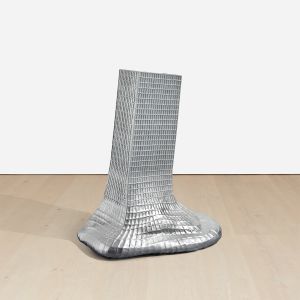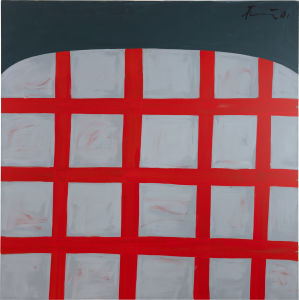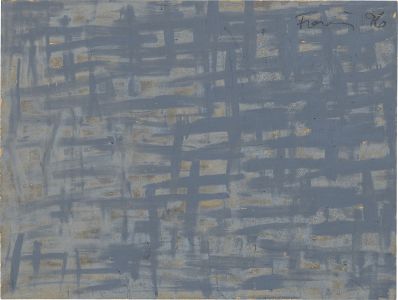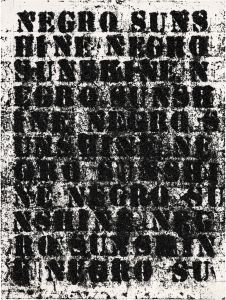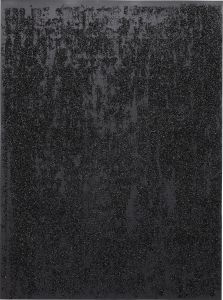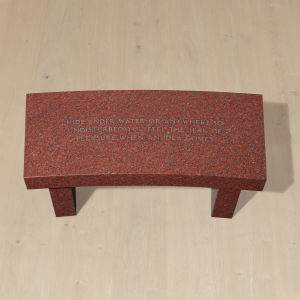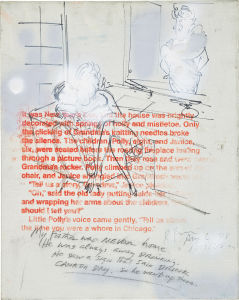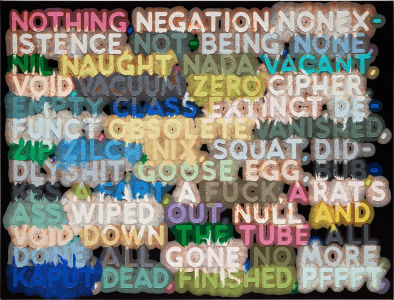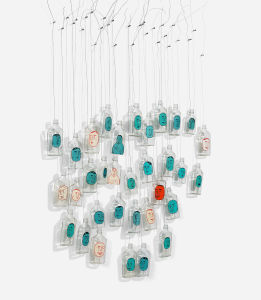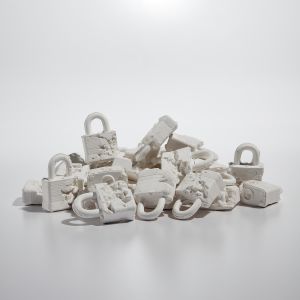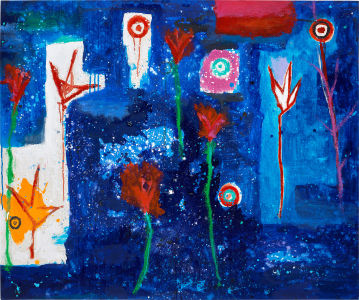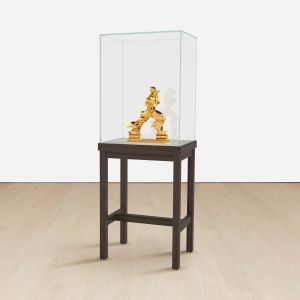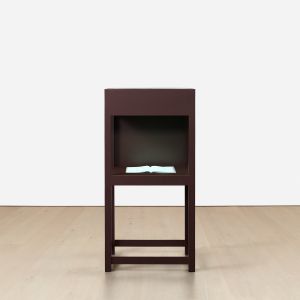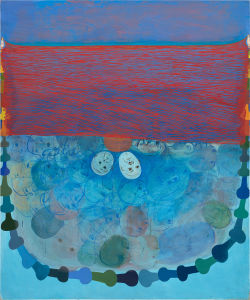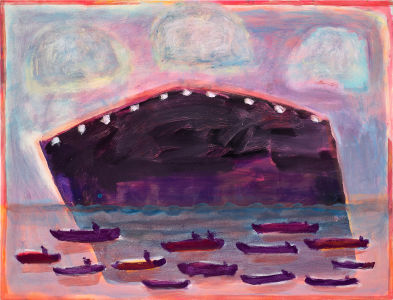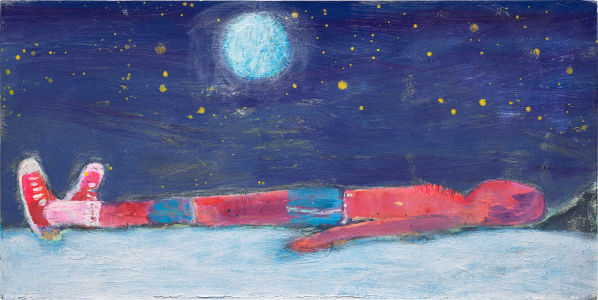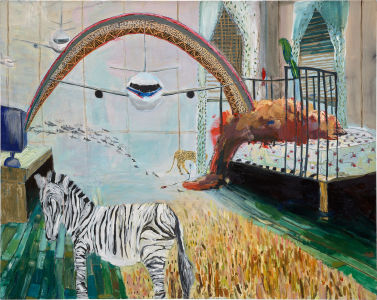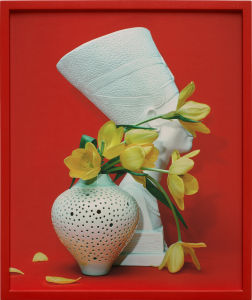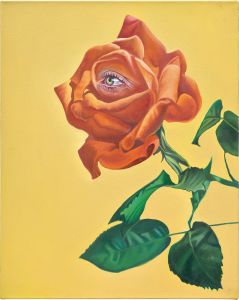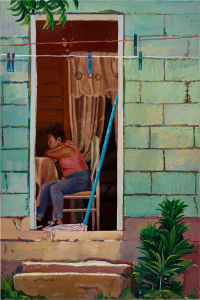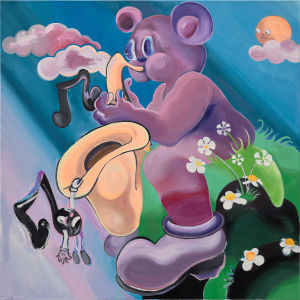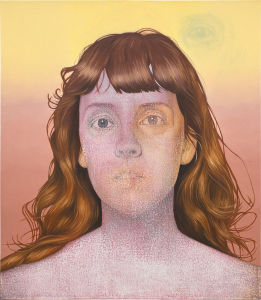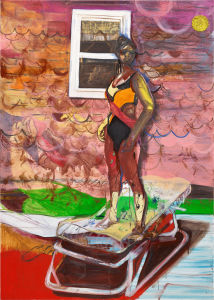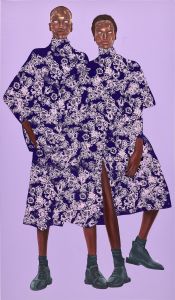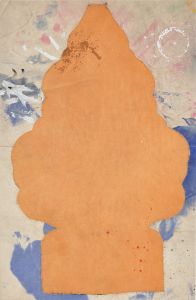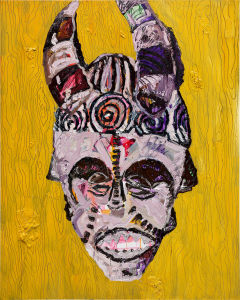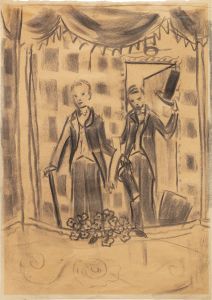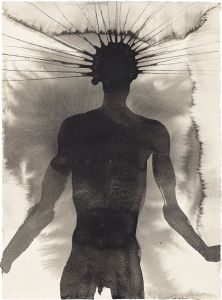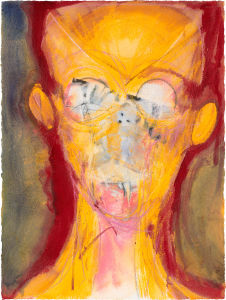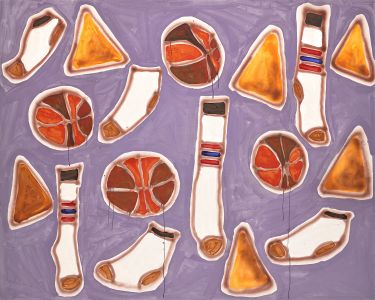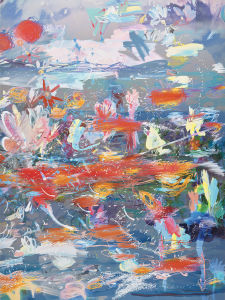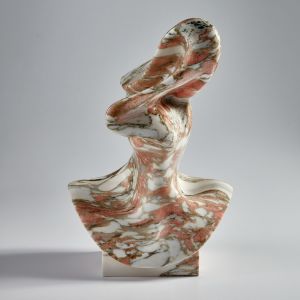Scottish artist Caroline Walker’s Maid, 1982, depicts a woman amidst a verdant garden. Desert cacti and palm trees in the foreground and background suggest an arid environment, while rising mountaintops in the distance imply a valley setting. In the center of the composition is a woman—a “maid”, we're told—standing at the door of a sleek, mid-century villa. With her back turned almost entirely towards us, the housekeeper turns her head right to catch a glimpse of a second figure in the mirrored exterior of the window.
Another woman, clad in all-white, watches the maid from afar: the artist herself. In the mirrored window we can see Walker's reflection at the moment she photographed the scene. While Walker typically takes the role of quiet observer, Maid is the first painting in which Walker has depicted herself. Of this work, Jorien de Vries writes, "the act of looking is thus emphasized even more."i
‘‘I find mirrors and reflective surfaces a very useful device for exploring the things that interest me in painting, particularly thinking about the mirror as a metaphor for the illusory space of painting itself.’’
—Caroline Walker
What is the emotional current of this painting? Why is the maid hesitating to enter the room? Is she being surveilled, or is this simply an innocuous moment? These are questions that Walker does not answer but rather leaves open for the viewer to consider. The painting depicts a moment meticulously orchestrated by Walker with a model and location staged for her image. Nevertheless, the fictional narrative implicates its obserevers, the artist included, in a voyeuristic vantage that challenges the work's spectatorship.
Maid was included in Walker’s 2016 exhibition at GRIMM gallery in Amsterdam titled The Racquet Club, named after a popular Palm Springs resort which opened in 1934 and which was demolished in 2014. Palm Springs, California—a desert city set amongst the San Jacinto Mountains—is famous for its midcentury modern architecture and design. Once developed for Los Angeles’ upper class and Hollywood’s biggest stars in the 1920s, Palm Springs embodies an artificial sense of “the good life”; it is this sense of a contrived paradise which gives it an eerie impression, suggesting a darker psychological undercurrent which has inspired authors and filmmakers alike.
Maid embodies the foreboding energy of The Racquet Club works with its depiction of the watcher and the watched. In representing both hotel goers and the staff that serve them, Walker creates a filmic narrative that elaborates upon her interest in showing women’s work, more specifically the kind of work that is often overlooked or wrongly devalued by society. At the same time, Walker’s paintings resist full narrative resolution, and in doing so, hint at the complexity of her subjects’ lives. What we see is what the artist chooses to present, an obscured perspective of two female experiences.

